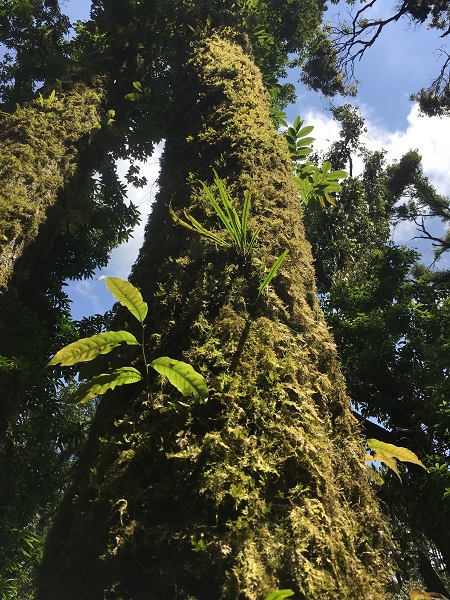
Bryophytes are very sensitive to environmental change, pollution, nutrient change and ecosystem health, and have been identified reliable for monitoring atmospheric nitrogen (N) deposition. Although previous studies have provided several important insights into the likely causes of bryophyte decline under conditions of increased N deposition, there remains lacking a detailed mechanistic analysis of such responses at multiple scales.
Researchers from Restoration Ecology Research Group of Xishuangbanna Tropical Botanical Garden (XTBG) carried out a field manipulation experiment in the montane forest of the Ailao Mountain National Nature Reserve (NNR) in southwest (SW) China. They aimed to interpret the sensitivity of epiphytic bryophytes for N deposition and to determine their critical load based on responses of epiphytic bryophytes at community, physiological, and chemical scales.
The researchers tested epiphytic bryophytes to evaluate them as bio-indicators of N pollution in Ailaoshan subtropical montane cloud forest. They repeatedly measured multiple parameters – from the scale of plant tissue up to that of community- during the applied N treatments over the course of two years.
The researchers detected severe reductions in epiphytic bryophyte richness and cover, coinciding with a decline in their growth and vitality, in response to simulated enhanced N deposition in the subtropical montane forest.
They proposed a mechanistic model interpreting the loss of epiphytic bryophytes resulting from N pollution. They suggested that the main mechanism driving the decline of epiphytic bryophytes was a disordered cellular carbon (C) metabolism, including photosynthesis inhibition and ensuing chlorophyll degradation. The degradation was caused by the leakage of magnesium and potassium and corresponding downstream effects, along with direct toxic effects of excessive N addition.
They observed significant reductions in the community cover of epiphytic bryophytes at the N addition rate of 7.4 kg N ha−1 yr−1, which coincided with significantly decreased growth, vitality, and net photosynthesis rates in the two dominant bryophyte species.
As the background wet N deposition rate of the Ailao Mountain is about 10.5 kg N ha−1 yr−1, based on epiphytic bryophytes, they therefore suggest a critical load of N deposition in the subtropical montane forest as 18 kg N ha−1 yr−1.
Their results confirmed the process of C metabolism and the chemical stability of epiphytic bryophytes are strongly influenced by N addition levels; when coupled to the strong correlations found with the loss of bryophytes. The study therefore provides important and timely evidence on the response mechanisms of bryophytes in an increasingly N-polluted world.
The study entitled “Epiphytic bryophytes as bio-indicators of atmospheric nitrogen deposition in a subtropical montane cloud forest: Response patterns, mechanism, and critical load” has been published online in Environmental Pollution.
Contact
SONG Liang Ph.D
Key Laboratory of Tropical Forest Ecology, Xishuangbanna Tropical Botanical Garden, Chinese Academy of Sciences, Mengla, Yunnan 666303, China
E-mail: songliang@xtbg.ac.cn

Epiphytic bryophytes on tree trunks in Ailaoshan Ailaoshan subtropical montane cloud forest.
(Image by SONG Liang)
| Menglun, Mengla, Yunnan 666303, China. Copyright XTBG 2005-2011 Powered by XTBG Information Center |